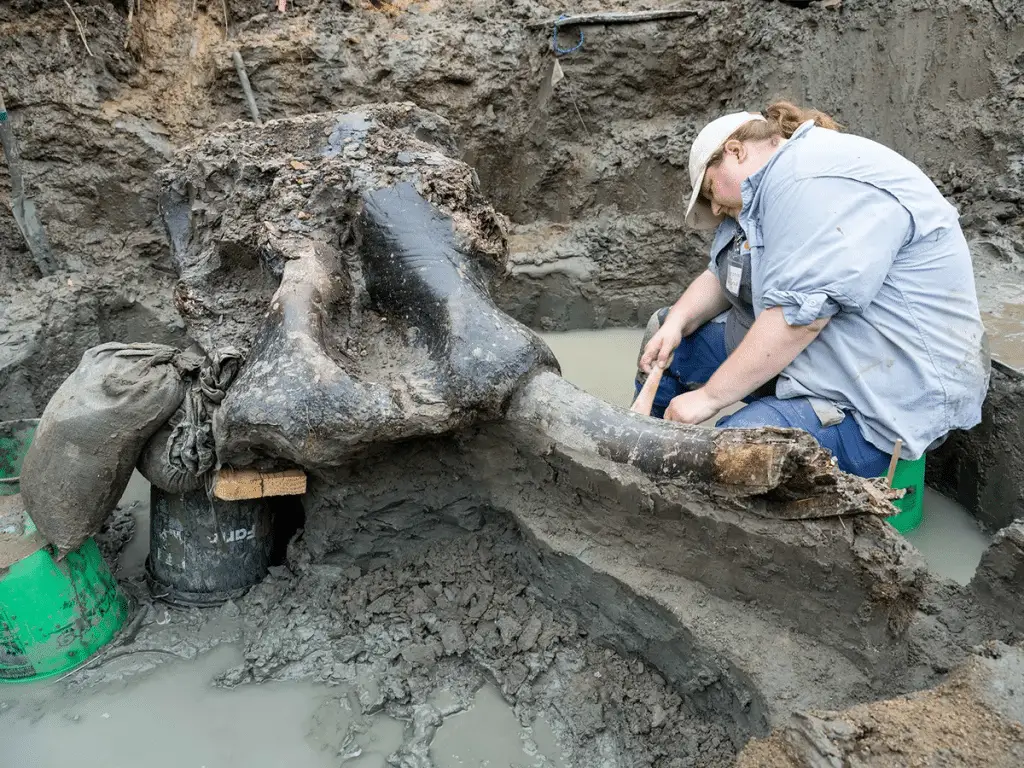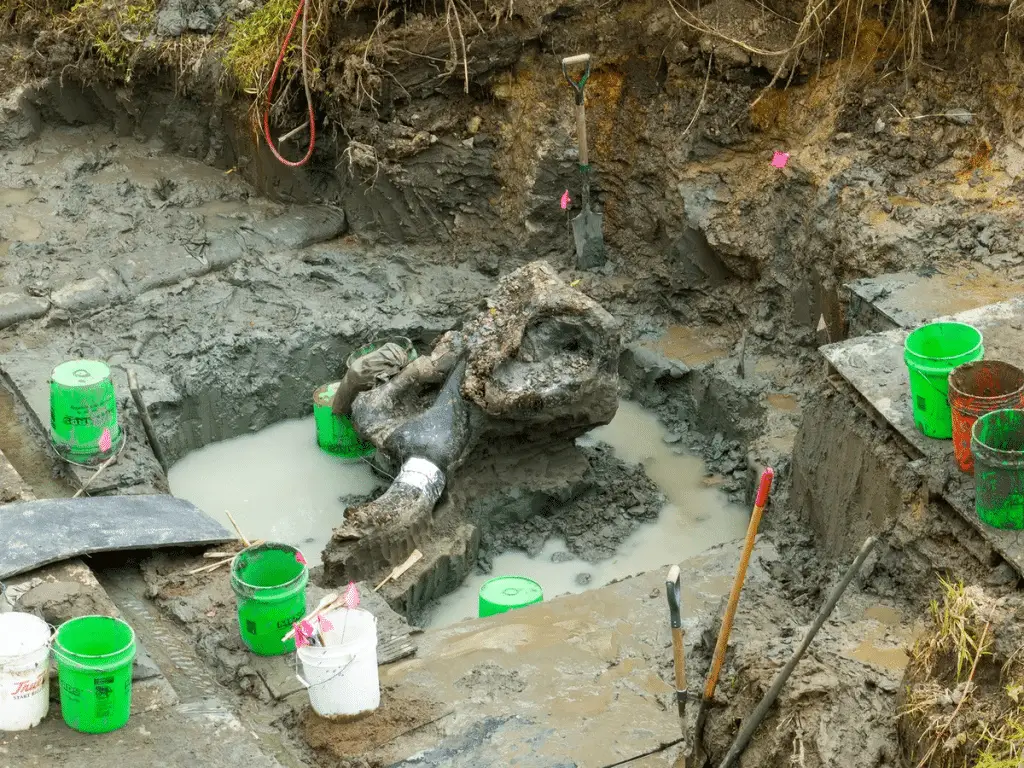Just a few days ago, a team of archaeologists made a discovery extraordinary in Iowa, in the United States, namely one Magnificently preserved mastodon skeletondating back to approximately 13,600 years ago.
This discovery was made along the bed of a stream in the Wayne Countywhere archaeologists worked for twelve days, recovering several bones of this extinct animal, including an exceptionally well-preserved skull.
The mastodons were prehistoric mammals closely related to today’s mammoths and elephants, and roamed the Earth as early as 23 million years ago and then became extinct about 10,000 years ago, which is why the discovery of this skull is particularly significant as it represents the first well-preserved mastodon skull ever found in the state.
The team of archaeologists, led by the director of the Iowa Office of the State Archaeologist John Doershuckbegan investigating after a local resident reported the presence of an unusually long bone in the creek bed.
This bone turned out to be a mastodon femurwhich prompted the team to return to the site for further excavation, and during these excavations, they also discovered a broken tusk protruding from the stream bed, suggesting the presence of a skull still attached.
Radiocarbon dating revealed that the skull is approximately 13,600 years old, a period that coincides with human presence in the area, so archaeologists They hope to find evidence of human interaction with this animalsuch as cut marks on bones or stone tools used for hunting and butchering.
This discovery not only enriches our understanding of mastodons, but also offers valuable insight into the earliest interactions between humans and these magnificent prehistoric animals.
The Discovery of the Mastodon: A Journey Through Time

The discovery represents a fascinating journey through timetaking us back to a time when these prehistoric giants roamed the plains of North America. As mentioned above, the mastodon was a close relative of elephants and mammoths, and like them it was an imposing mammal that could reach a height of about three meters and a weight of six tons.
Their diet consisted mainly of leaves, branches And shrubswhich chewed with their cone-shaped teeth, distinctive from the flat teeth of mammoths.
The discovery occurred in a unique geological and environmental context, in fact during the last ice age, much of North America was covered by glaciers, but the southern region of Iowa was free from ice and was beginning to vegetate, creating a ideal habitat for mastodons and other large herbivores.
This resource-rich environment also attracted early humans, who settled in the region and interacted with the local wildlife.
The importance of discovery
The discovery of the mastodon skull in Iowa is not only an archaeological milestone, but also offers a valuable window into prehistoric life and interactions between humans and these animals, and the discovery of these interactions could provide crucial information on hunting techniques and feeding habits of the first inhabitants of the region.
One of the main challenges in the discovery and study of mastodon remains is their preservation, in fact mastodon bones are often fragile and can deteriorate rapidly if they are not treated with care.

Archaeologists at the University of Iowa have used advanced excavation and conservation techniques to ensure that the mastodon remains are preserved for future generations, with these finds then being on display at the Wayne County Prairie Trails Museumwhere the public will be able to admire these extraordinary prehistoric remains up close.
The discovery of the mastodon in Iowa is an event of great scientific and cultural significance, not only enriching our understanding of the prehistoric fauna of North America, but also offering a fascinating glimpse into the earliest interactions between humans and these magnificent animals.
With further research and excavations, archaeologists hope to uncover even more secrets about this mastodon and the world it lived in.
If you are attracted by science or technology, keep following us, so you don’t miss the latest news and updates from around the world!
#Mastodon #13600YearOld #Specimen #Iowa
